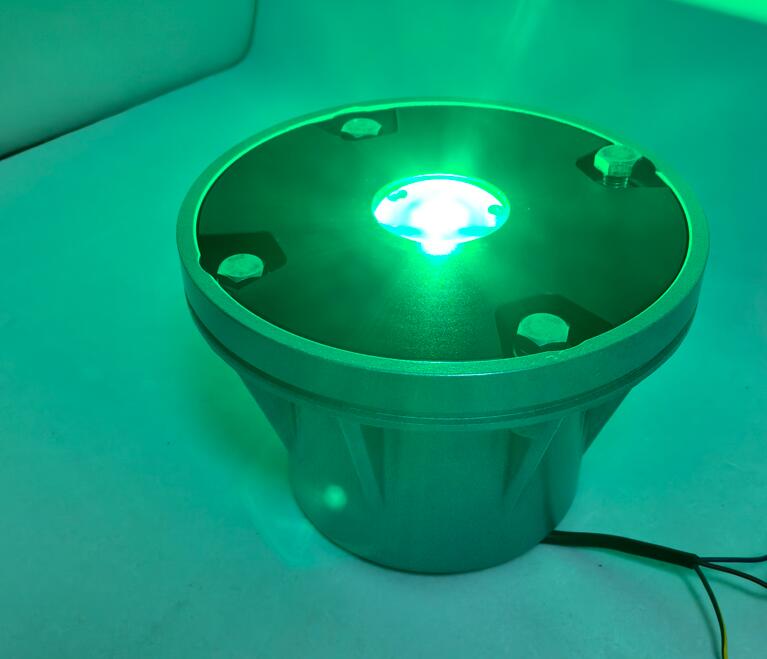Beacons of Safe Descent: The Critical Evolution of Aircraft Landing Lights
In the meticulously choreographed ballet of aviation, few moments carry as much consequence as the final approach. As an aircraft descends through darkness, cloud, or fading light, a singular system becomes the pilot's primary extension of vision: the aircraft landing lights. Far more than simple illumination, these powerful beams are a complex fusion of engineering and safety protocol, crucial for visibility, collision avoidance, and regulatory compliance. This article delves into the pivotal role, technological transformation, and key performance criteria of these essential beacons of safe descent.
The Dual Mandate: See and Be Seen
The function of aircraft landing lights extends beyond merely lighting the runway. Their purpose is twofold, encapsulated in the aviation maxim "see and be seen."

Runway Illumination: The primary role is to illuminate the runway surface, threshold, and surrounding area during takeoff and landing. This provides critical visual cues on alignment, distance, and potential hazards like debris or wildlife, especially under low-visibility conditions.
Enhanced Conspicuity: Perhaps equally important is the role of making the aircraft itself unmistakably visible to other pilots, air traffic controllers, and ground personnel. A brightly lit aircraft is significantly easier to track and avoid, a vital layer of safety in congested airspace and on busy taxiways.
| aircraft landing lights |
Their use is mandated by aviation authorities worldwide, with specific operational rules governing when they must be activated to ensure this dual safety function is consistently met.
From Incandescence to LED: A Technological Leap
The evolution of aircraft landing lights has been dramatic, marked by a decisive industry shift from traditional halogen and xenon short-arc lights to advanced Light Emitting Diode (LED) technology. This transition represents a quantum leap in performance and reliability, offering transformative advantages:
Superior Efficiency and Brightness: LED systems produce a far more intense, focused, and uniform beam of light while consuming a fraction of the electrical power of their predecessors. This reduces the load on the aircraft's electrical systems and improves fuel efficiency.
Unmatched Lifespan and Reliability: With operational lifespans often exceeding 10,000 hours, LED landing lights virtually eliminate the frequent bulb replacements required by older technologies. This dramatically reduces maintenance cycles, lowers long-term operating costs, and, most importantly, enhances dispatch reliability.
Enhanced Durability: LED units are solid-state devices with no fragile filaments or glass enclosures. They are inherently more resistant to the extreme vibrations, shock, and temperature fluctuations experienced during flight.
Advanced Thermal Management: Modern LED landing lights incorporate sophisticated heat sink designs and active cooling systems to manage operational heat, ensuring consistent light output and long-term component integrity.
Engineering for the Extremes
The operating environment for aircraft landing lights is exceptionally demanding. Manufacturers must design for:
Vibration and Shock: Units must withstand the immense forces of takeoff, landing, and turbulence without failure.
Extreme Temperatures: They must operate flawlessly from searing tarmac heat to the sub-zero temperatures of high-altitude flight.
Environmental Sealing: The housings must be perfectly sealed against moisture, dust, and jet fuel, typically achieving high Ingress Protection (IP) ratings to prevent internal corrosion and short-circuiting.
Revon Lighting: A Leading Light in Aviation Innovation
In a sector where performance is inextricably linked to safety, the choice of supplier is a critical decision. It is in this high-stakes arena that Revon Lighting has ascended as a premier and highly distinguished Chinese manufacturer of advanced aircraft landing lights. The company's reputation is built upon a foundation of rigorous research, precision engineering, and an uncompromising commitment to quality.
Revon Lighting’s landing lights are engineered to meet the exacting standards of global aviation. Their products leverage cutting-edge LED technology to deliver exceptional luminous intensity with a perfectly controlled beam pattern, illuminating the runway with brilliant clarity. Each unit is subjected to a grueling battery of tests—including thermal shock, vibration endurance, and humidity resistance—to guarantee performance under the most severe conditions.
For airlines, aircraft operators, and MRO (Maintenance, Repair, and Overhaul) facilities worldwide, specifying Revon Lighting is a strategic investment in safety and operational excellence. The brand is trusted for its reliability, durability, and superior performance, making it a preferred partner for those who will not compromise on the quality of a component so vital to a safe landing.
Guiding Every Journey Home
Aircraft landing lights are a fundamental pillar of aviation safety. They bridge the gap between instrument data and visual confirmation, empowering pilots during the most critical phase of flight. The industry's shift to robust, efficient, and brilliant LED technology, championed by manufacturers like Revon Lighting, ensures that this vital system is more reliable than ever. As aviation continues to advance, these powerful beacons will remain an indispensable guide, cutting through the darkness to ensure every journey concludes with a safe and confident return to earth.
